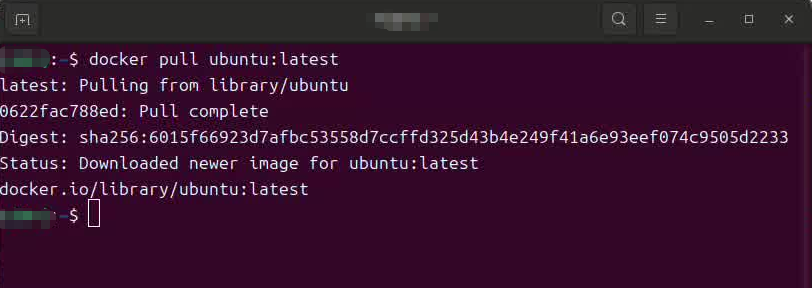每日习题分享。
字符串函数的运用
首先回顾一下字符串函数。
字符串长度
strlen(const char *s);
功能:计算字符串的长度,不包含终止符\0。
字符串连接
char *strcat(char *dest, const char *src);
char *strncat(char *dest, const char *src, size_t n);
功能:将src追加到dest后。strncat最多追加n个字符。
字符串连接
char *strcat(char *dest, const char *src);
char *strncat(char *dest, const char *src, size_t n);
功能:将src追加到dest后。strncat最多追加n个字符。
字符串比较
int strcmp(const char *s1, const char *s2);
int strncmp(const char *s1, const char *s2, size_t n);
功能:比较字符串。返回值为 0 表示相等,<0 表示s1小于s2,>0 表示s1大于s2。strncmp最多比较n个字符。
字符串分割
char *strtok(char *str, const char *delim);
功能:将字符串按分隔符delim分割成多个子串。(例如 ,.)
习题一

#include <stdio.h>
#include <string.h>
#define MAXLEN 1000
int main()
{
char s[MAXLEN + 1], t[MAXLEN + 1];
int len_s, len_t;
if(fgets(s, sizeof(s), stdin) != NULL)
{
// 去掉末尾的换行符
len_s = strlen(s);
if (len_s > 0 && s[len_s - 1] == '\n')
{
s[len_s - 1] = '\0';
len_s--;
}
}
if (fgets(t, sizeof(t), stdin) != NULL)
{
len_t = strlen(t);
if (len_t > 0 && t[len_t - 1] == '\n')
{
t[len_t - 1] = '\0';
len_t--;
}
}
// 检查连接后的字符串长度是否超过1000个字符
if (len_s + len_t > MAXLEN)
{
printf("错误:连接将导致字符串长度超限。\n");
printf("%s\n", s);
}
else
{
// 连接字符串 t 到 s 的末尾
strcat(s, t);
printf("%s\n", s);
}
return 0;
}本题其实没有任何难度,但是仅仅使用strcat函数的话是不会通过的。需要考虑众多的因素。
例如:
这里把考虑长度的部分删除,直接strcat,输出。

习题二

#include <stdio.h>
#include <string.h>
int main()
{
char s[1001];
int pos, len;
// 读取字符串(包含空格)
if (fgets(s, sizeof(s), stdin) == NULL)
{
return 1;
}
// 移除换行符
size_t len_s = strlen(s);
if (len_s > 0 && s[len_s - 1] == '\n')
{
s[--len_s] = '\0';
}
// 读取位置和长度
if (scanf("%d %d", &pos, &len) != 2)
{
return 1;
}
// 调整为0-based索引
pos--;
// 检查位置有效性
if (pos >= len_s)
{
printf("%s\n", s);
return 0;
}
// 计算实际删除长度
int delete_len = (pos + len > len_s) ? len_s - pos : len;
// 移动剩余字符覆盖删除部分
memmove(s + pos, s + pos + delete_len, len_s - (pos + delete_len) + 1);
// 输出结果
printf("%s\n", s);
return 0;
}习题三

首先我们需要考虑下标与位置的关系,由题目可知 6指的是下标5。易错点
其他的在按题目要求来书写。
#define _CRT_SECURE_NO_WARNINGS
#include <stdio.h>
#include <string.h>
#define MAX_LEN 1000
int main()
{
char s[MAX_LEN + 2]; // 主串缓冲区,足够容纳输入和换行符
fgets(s, sizeof(s), stdin); // 读取主串
// 去除末尾的换行符
size_t len_s = strlen(s);
if (len_s > 0 && s[len_s - 1] == '\n')
{
s[len_s - 1] = '\0';
len_s--;
}
int pos, len;
scanf("%d %d", &pos, &len); // 题目保证参数合法,无需检查
// 直接截取并输出,无需调整
int i;
for (i = 0; i < len && (s + pos - 1)[i] != '\0'; i++)
{
putchar((s + pos - 1)[i]);
}
putchar('\n');
return 0;
}习题四

这是一道题的测试点,如果提交后没有通过,需要通过这些来修改代码。
#include <stdio.h>
#include <stdlib.h>
#include <string.h>
char* insertString(char* s, char* t, int pos) {
int len_s = strlen(s);
int len_t = strlen(t);
// Check if pos is valid
if (pos < 1 || pos > len_s + 1) {
return NULL;
}
// Allocate memory for the new string
char* result = (char*)malloc((len_s + len_t + 1) * sizeof(char));
if (result == NULL) {
return NULL;
}
// Copy the first part of s to result
strncpy(result, s, pos - 1);
result[pos - 1] = '\0';
// Append t to result
strcat(result, t);
// Append the remaining part of s to result
strcat(result, s + pos - 1);
return result;
}
int main() {
char s[1000], t[1000];
int pos;
// Read the input strings and position
fgets(s, sizeof(s), stdin);
s[strcspn(s, "\n")] = 0; // Remove newline character
fgets(t, sizeof(t), stdin);
t[strcspn(t, "\n")] = 0; // Remove newline character
scanf("%d", &pos);
// Insert t into s at position pos
char* result = insertString(s, t, pos);
if (result == NULL) {
printf("错误:指定插入位置不存在。\n");
printf("%s\n", s);
} else {
printf("%s\n", result);
free(result);
}
return 0;
}
![[项目总结] 基于Docker与Nginx对项目进行部署](https://i-blog.csdnimg.cn/direct/6b5052373d614e808bf978ad806d818c.png)








![2025年渗透测试面试题总结-匿名[实习]安全工程师(安全厂商)(题目+回答)](https://i-blog.csdnimg.cn/direct/2ea6508e11f348769528e86055da4fc5.png)


![[爬虫实战] 爬微博图片:xpath的具体运用](https://i-blog.csdnimg.cn/direct/3bac5f0195f0425a8c715efbc436249c.png)






